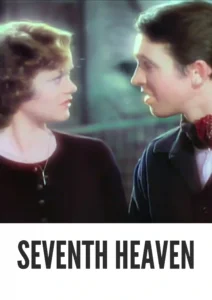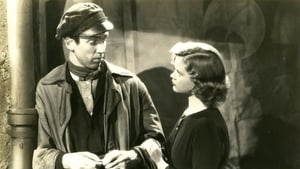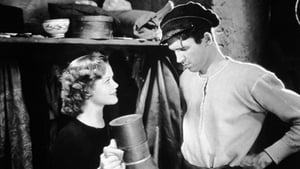Video Sources 0 Views
- Seventh Heaven 1937 Colorized


Synopsis
Table of Contents
ToggleLove and Sacrifice: Seventh Heaven (1937) in Stunning Color

Step into the heartwarming world of Seventh Heaven, a romantic drama from 1937, now beautifully colorized for an immersive viewing experience. Starring Simone Simon and James Stewart, this film, also known as 7th Heaven, tells a poignant story of love, hope, and sacrifice set against the backdrop of World War I. Perfect for fans of classic cinema and timeless romances, this HD download brings a beautifully restored classic to your screen.
Seventh Heaven Storyline: A Tale of Love Amidst War
Seventh Heaven follows the story of Diane (Simone Simon), a young Parisian street girl, and Chico (James Stewart), a proud sewer cleaner with dreams of grandeur. Their lives intertwine when Chico rescues Diane from her abusive sister, and they forge a deep connection based on mutual respect and affection.As war breaks out, Chico enlists in the army, promising to return to Diane. Their love is tested by the harsh realities of war, separation, and uncertainty. Diane finds solace in their shared memories and unwavering faith, while Chico faces the horrors of the battlefield with Diane’s love as his guiding light. Seventh Heaven is a moving testament to the resilience of the human spirit and the enduring power of love in the face of adversity.
Movie Cast
The film features a stellar cast who bring depth and emotion to this timeless love story:
- Simone Simon as Diane
- James Stewart as Chico
- Jean Hersholt as Father Chevillon
- Gregory Ratoff as Boul
- Gale Sondergaard as Nana
Movie Genre
Seventh Heaven falls into the genre of romantic drama, with elements of war and social commentary that add depth and resonance to the story. Its themes of love, sacrifice, and hope make it a timeless and universally appealing film.
Historical Context: Hollywood Romance in the Late 1930s
Released in 1937, Seventh Heaven reflects the style and sensibilities of Hollywood filmmaking during the late 1930s. The film showcases the talents of rising stars Simone Simon and James Stewart. Seventh Heaven, with its romantic storyline and poignant themes, resonated with audiences seeking escapism and emotional connection during a tumultuous period in history.
Colorization Details
This colorized version of Seventh Heaven has been meticulously restored using modern digital techniques, enhancing the visual appeal while preserving the film’s original charm and emotional impact. The colorization process involved carefully analyzing the grayscale tones of the original black and white footage and assigning appropriate colors to each scene. This painstaking process breathes new life into the characters and settings, making the story even more captivating for modern audiences. While the artistic interpretation of colorization may vary, it introduces these films to a broader audience, ensuring their legacy for future generations.
Technical Details
- Director: Henry King
- Screenplay: Melville Baker, based on the play “Seventh Heaven” by Austin Strong
- Cinematography: Merritt B. Gerstad
- Edited by: Barbara McLean
- Production Company: 20th Century Fox
- Distributed by: 20th Century Fox
- Runtime: 102 minutes
Technical Specifications
- Download Format: MP4
- Resolution: HD (1080p)
- Compatibility: Compatible with most devices, including smartphones, tablets, computers, and smart TVs.
Reviews and Critical Reception
Seventh Heaven (1937) is celebrated for its moving performances, romantic storyline, and timeless themes. Critics and audiences alike have praised the film for its emotional depth, visual beauty, and powerful message of hope and love. As a classic Hollywood romance, Seventh Heaven continues to captivate viewers with its enduring appeal.
FAQs
- Q: What is Seventh Heaven about?
- A: Seventh Heaven is a romantic drama about a Parisian sewer worker and a street girl who find love amidst the turmoil of World War I.
- Q: Is Seventh Heaven (1937) a well-known film?
- A: Seventh Heaven is a beloved classic known for its heartfelt story, strong performances, and timeless themes.
- Q: Is this version of Seventh Heaven colorized?
- A: Yes, this version has been professionally colorized to enhance the viewing experience.
- Q: What makes Seventh Heaven a classic?
- A: Seventh Heaven is a classic because of its universal themes of love, sacrifice, and hope, as well as its memorable characters and emotional impact.
- Q: What is the download format?
- A: The download format is MP4, which is compatible with most devices.
- Q: What resolution is the download?
- A: The resolution is HD (1080p), providing a high-quality viewing experience.
Download Now in HD!
Watch Seventh Heaven Today!












